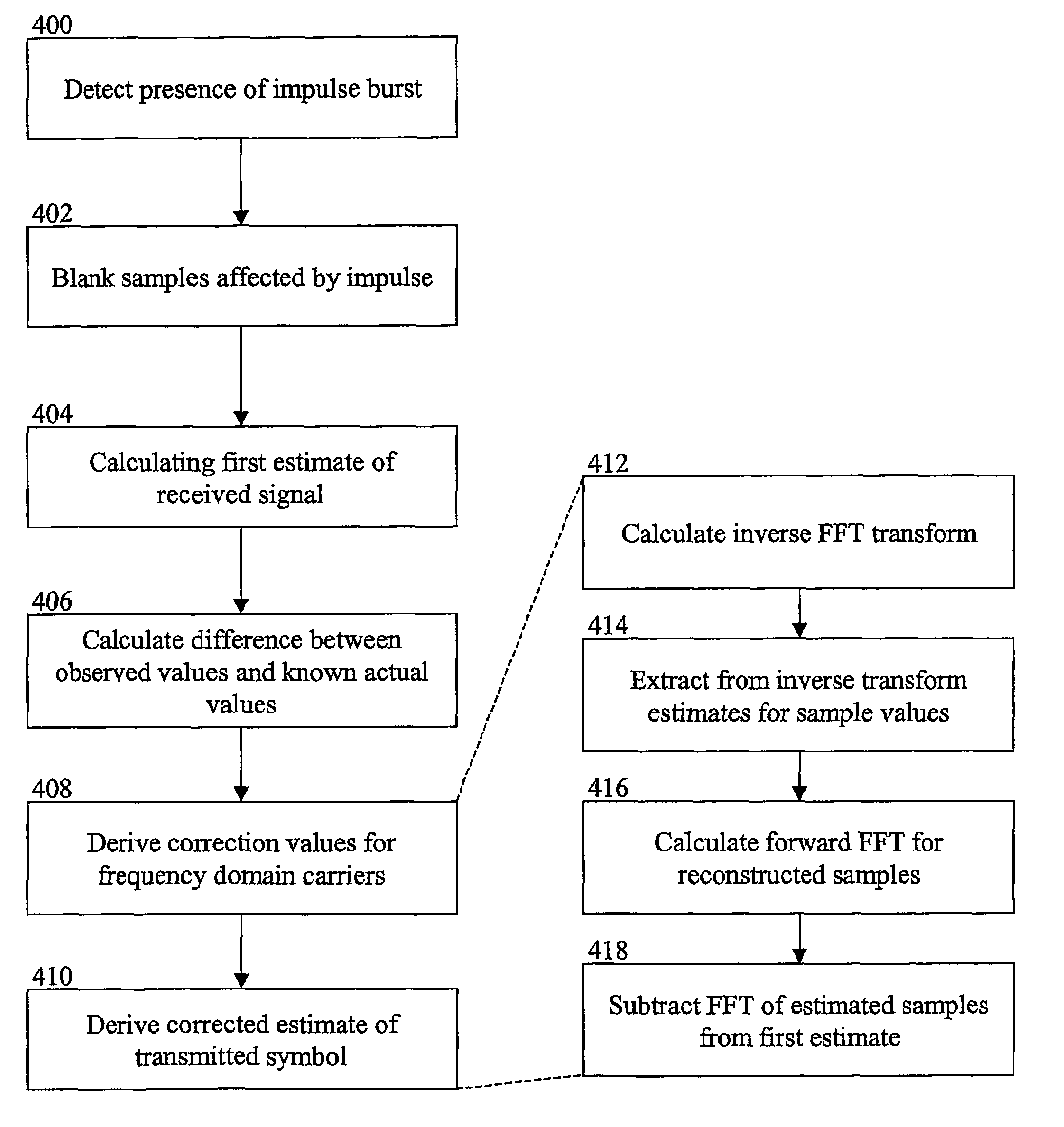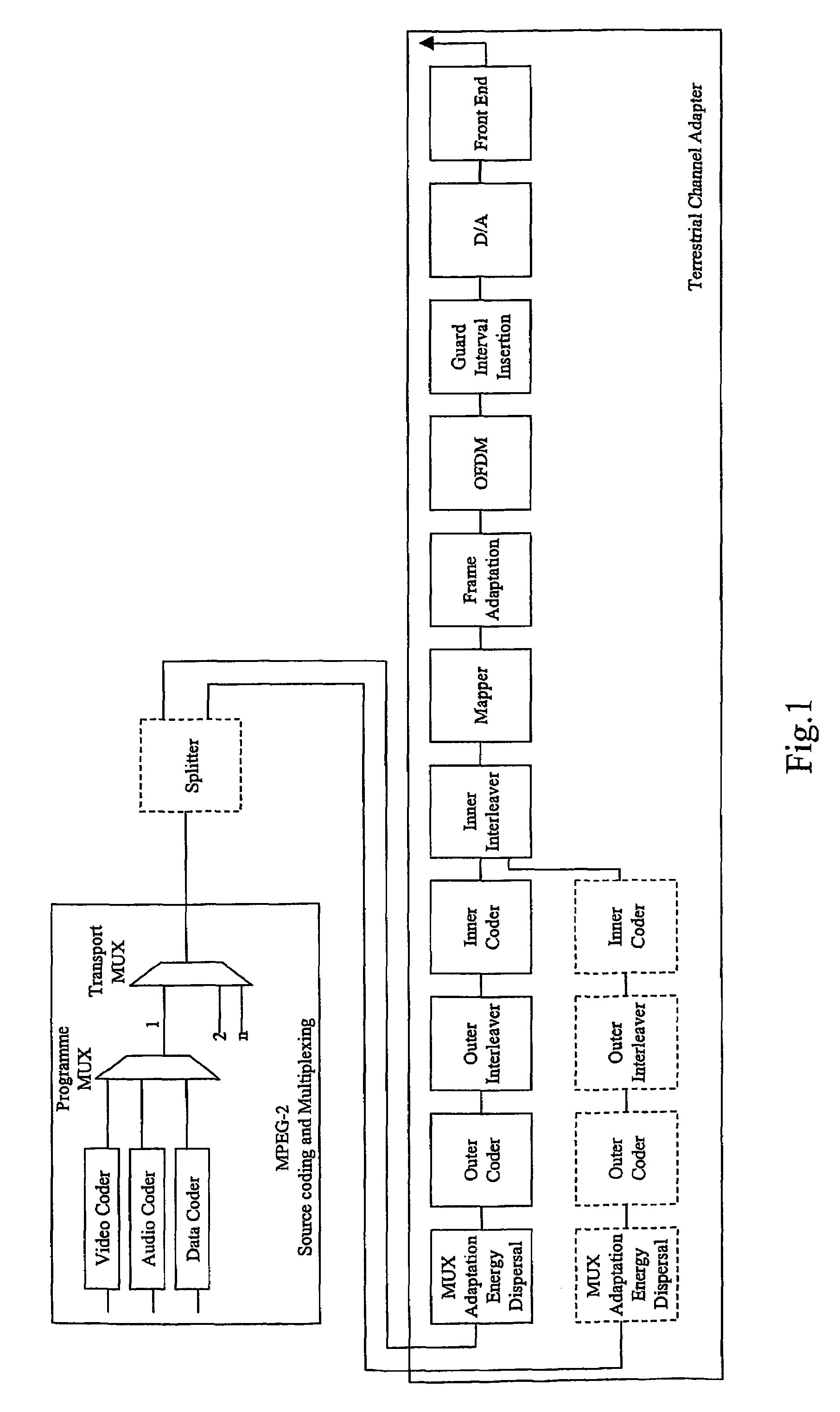Method and system for receiving a multi-carrier signal
a multi-carrier and signal technology, applied in the field of systems and methods for distributing data, can solve the problems of difficult broadcast reception, reluctant to distribute their content via the internet, and digital radio has not gained much acceptance on the mark
- Summary
- Abstract
- Description
- Claims
- Application Information
AI Technical Summary
Problems solved by technology
Method used
Image
Examples
Embodiment Construction
[0031]Preferable embodiments of the invention provide a method for tolerating impulsive burst noise in pilot based OFDM systems, especially using DVB-T standard such as Digital Video Broadcasting (DVB): Framing structure, channel coding and modulation for digital terrestrial television, ETSI EN 300 744. The method contains following steps: 1) recognition of the impulse position and possibly length in the time domain symbol, 2) blanking of those samples of the symbol where significant amount of impulse noise is present, 3) calculating the first estimate of the received signal from the blanked symbol, 4) using prior information (guard band carriers, pilot carriers) an estimate of the blanked symbol is calculated using inverse FFT on the differences of the observed carrier values from the known values in the frequency domain 5) correction values for the frequency domain carriers are derived taking the FFT of the restored time domain samples, 6) the corrected estimate of the received sy...
PUM
 Login to View More
Login to View More Abstract
Description
Claims
Application Information
 Login to View More
Login to View More - R&D
- Intellectual Property
- Life Sciences
- Materials
- Tech Scout
- Unparalleled Data Quality
- Higher Quality Content
- 60% Fewer Hallucinations
Browse by: Latest US Patents, China's latest patents, Technical Efficacy Thesaurus, Application Domain, Technology Topic, Popular Technical Reports.
© 2025 PatSnap. All rights reserved.Legal|Privacy policy|Modern Slavery Act Transparency Statement|Sitemap|About US| Contact US: help@patsnap.com



